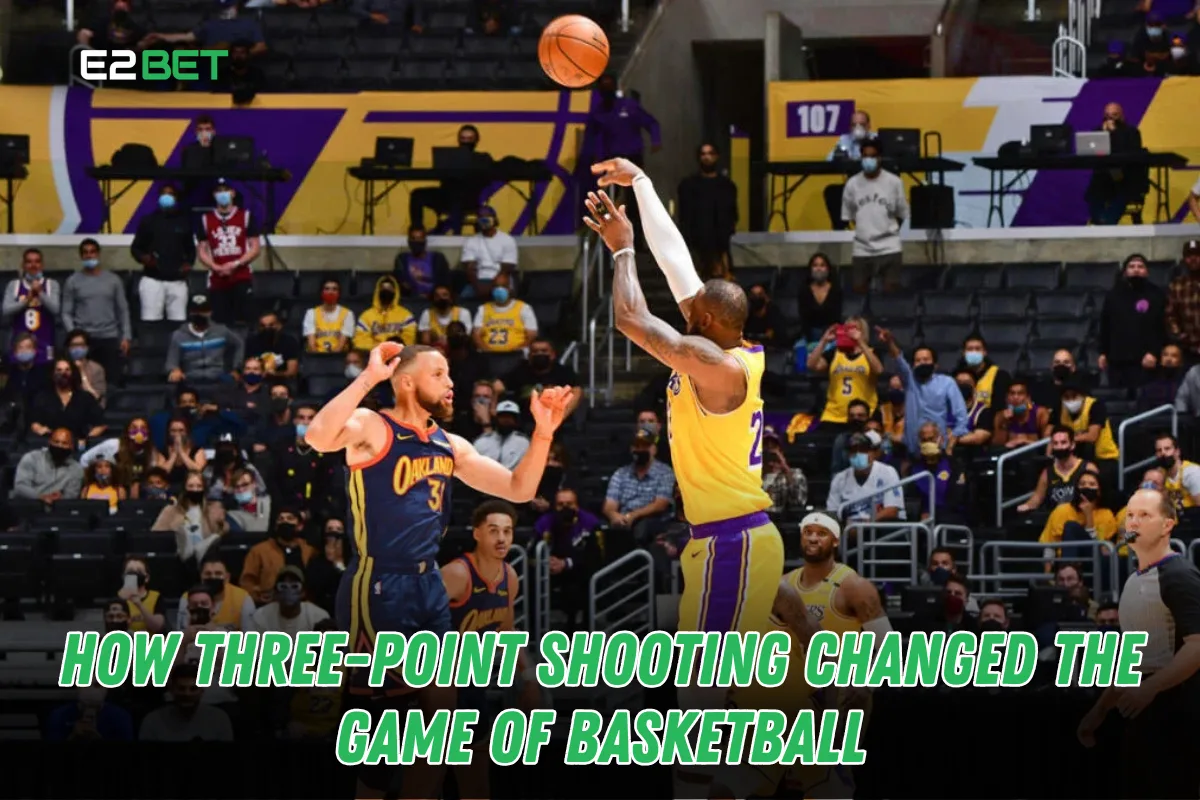Basketball has evolved dramatically over the years, and no single innovation has had a greater impact than the introduction of the three-point line. Once seen as a novelty, the three-pointer has completely transformed the way the game is played. From changing offensive strategies to influencing player development, the deep shot has become the backbone of modern basketball. But how did this shift happen? Let’s dive into the fascinating journey of how three-point shooting changed the game forever.
The Origins of the Three-Point Line
The three-point line wasn’t always a part of basketball. It was first introduced by the American Basketball League (ABL) in 1961, but it wasn’t until the ABA adopted it in 1967 that it started gaining attention. The NBA officially implemented the three-pointer in the 1979-80 season, but at first, it was used sparingly. Many NBA teams initially hesitated to embrace the new rule, preferring traditional inside scoring over deep-range shots.
How Three-Point Shooting Became Essential
Slow Adoption and Early Usage
During the 1980s, the three-point shot was more of a situational tool than a primary offensive weapon. Players rarely took three-pointers, and teams focused on traditional inside-out basketball. However, players like Larry Bird and Dale Ellis showcased the potential of the deep shot, leading to its gradual acceptance.
Rise of Three-Point Specialists
By the 1990s, three-point specialists started emerging. Players like Reggie Miller, Ray Allen, and Steve Kerr proved that a reliable three-point shot could be a game-changer. The rise of perimeter shooting forced defenses to adjust, creating more space for offensive plays.

How Analytics Changed the Game
The biggest shift in three-point shooting came with the rise of basketball analytics. Advanced statistics revealed that three-pointers had a higher points-per-shot value than mid-range attempts. This discovery led to the “Moreyball” strategy—named after former Houston Rockets GM Daryl Morey—which prioritized three-pointers and layups over inefficient mid-range shots.
NBA teams began optimizing offensive strategies based on shooting efficiency, leading to an explosion in perimeter shooting. Today, analytics play a key role in determining the best basketball shooting trainer programs and NBA coaching strategies.
Golden State Warriors and the Three-Point Revolution
No team exemplifies the three-point revolution more than the Golden State Warriors. Led by Stephen Curry and Klay Thompson, the Warriors changed basketball forever with their relentless deep shooting. Curry’s ability to shoot from almost anywhere on the court forced defenses to extend, opening up space for teammates. This strategy, combined with Draymond Green’s playmaking, led to multiple championships and inspired teams across the league to prioritize three-point shooting.
Impact of Three-Point Shooting on Modern Basketball
Increased Floor Spacing
A strong three-point shooting team forces defenses to spread out, creating more room for drives and cuts. This has led to a rise in positionless basketball, where even big men like Nikola Jokić and Karl-Anthony Towns are expected to shoot from deep.
Evolution of Big Men
Traditional centers who dominated the post, like Shaquille O’Neal, have become rarer. Instead, modern bigs have developed three-point range to stay relevant. The shift in strategy has changed player development, with young athletes focusing on shooting efficiency from an early age.
Defensive Adjustments
With NBA teams shooting more three-pointers than ever, defenses have had to evolve. Coaches now prioritize perimeter defense and switch-heavy schemes to contest shots effectively. The best NBA defensive teams incorporate strategies to neutralize deep shooters while maintaining strong interior defense.
How Three-Point Shooting Changed Player Development
Young players today focus heavily on three-point shooting from an early age. Basketball training programs emphasize deep-range shooting, while online coaching for three-point shooting has become increasingly popular. Players at all positions are now expected to have reliable shooting ability, changing the landscape of professional basketball.
The Decline of the Mid-Range Game
With the emphasis on efficiency, mid-range shots have become a lost art. Players like DeMar DeRozan and Kawhi Leonard still excel in the mid-range, but most teams prefer shots from beyond the arc or at the rim. However, in clutch moments, the mid-range jumper remains valuable as defenses focus on preventing threes and layups.
The Future of Three-Point Shooting
With the game evolving so rapidly, what’s next for three-point shooting?
- Some suggest moving the three-point line further back to balance scoring.
- Others propose adding a four-point shot for extreme distance shots.
- Defensive strategies will likely continue to evolve to counteract perimeter-heavy offenses.
Conclusion
The rise of three-point shooting has fundamentally changed basketball. From its humble beginnings as an experimental rule to becoming the most dominant strategy in the game, the three-pointer has shaped how teams play, how players develop, and how fans experience the sport. While some may argue that the game has lost its balance, one thing is certain—three-point shooting is here to stay, and its influence will continue to shape basketball for generations to come.
FAQs
Q1. When was the three-point line introduced in the NBA?
Ans. The NBA adopted the three-point line in the 1979-80 season, though it was previously used in the ABA and other leagues.
Q2. Who is the best three-point shooter of all time?
Ans. Stephen Curry is widely regarded as the greatest three-point shooter in NBA history, holding multiple records for three-pointers made.
Q3. Why do teams prefer three-pointers over mid-range shots?
Ans. Analytics have shown that three-pointers provide a higher return on investment in terms of points per shot compared to mid-range attempts.
Q4. How has three-point shooting changed player roles?
Ans. Players at all positions are now expected to have some level of three-point shooting ability, including traditional centers.
Q5. Will the NBA introduce a four-point shot in the future?
Ans. `There have been discussions about adding a four-point shot, but no official plans have been made yet.